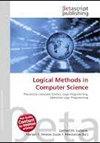A Coinductive Reformulation of Milner's Proof System for Regular Expressions Modulo Bisimilarity
IF 1
4区 数学
Q4 COMPUTER SCIENCE, THEORY & METHODS
引用次数: 0
Abstract
Milner (1984) defined an operational semantics for regular expressions as finite-state processes. In order to axiomatize bisimilarity of regular expressions under this process semantics, he adapted Salomaa's proof system that is complete for equality of regular expressions under the language semantics. Apart from most equational axioms, Milner's system Mil inherits from Salomaa's system a non-algebraic rule for solving single fixed-point equations. Recognizing distinctive properties of the process semantics that render Salomaa's proof strategy inapplicable, Milner posed completeness of the system Mil as an open question. As a proof-theoretic approach to this problem we characterize the derivational power that the fixed-point rule adds to the purely equational part Mil$^-$ of Mil. We do so by means of a coinductive rule that permits cyclic derivations that consist of a finite process graph with empty steps that satisfies the layered loop existence and elimination property LLEE, and two of its Mil$^{-}$-provable solutions. With this rule as replacement for the fixed-point rule in Mil, we define the coinductive reformulation cMil as an extension of Mil$^{-}$. In order to show that cMil and Mil are theorem equivalent we develop effective proof transformations from Mil to cMil, and vice versa. Since it is located half-way in between bisimulations and proofs in Milner's system Mil, cMil may become a beachhead for a completeness proof of Mil. This article extends our contribution to the CALCO 2022 proceedings. Here we refine the proof transformations by framing them as eliminations of derivable and admissible rules, and we link coinductive proofs to a coalgebraic formulation of solutions of process graphs.正则表达式模双相似的Milner证明系统的一个共归纳重表述
米尔纳(1984)将正则表达式的操作语义定义为有限状态过程。为了公理化正则表达式在这种过程语义下的双相似性,他采用了Salomaa在语言语义下正则表达式相等性完备的证明体系。除了大多数方程公理外,Milner的系统Mil继承了Salomaa系统的非代数规则,用于求解单不动点方程。认识到过程语义的不同属性使得Salomaa的证明策略不适用,Milner提出了系统Mil的完备性作为一个开放的问题。作为该问题的证明理论方法,我们描述了不动点规则添加到Mil的纯方程部分Mil$^-$的导数幂。我们通过一个协归纳规则来实现,该规则允许由满足分层循环存在性和消去性LLEE的具有空步骤的有限过程图组成的循环推导,以及它的两个Mil$^{-}$-可证明解。用此规则代替Mil中的不动点规则,我们将Mil$^{-}$定义为Mil$^{-}$的扩展。为了证明cMil和Mil是定理等价的,我们开发了从Mil到cMil的有效证明变换,反之亦然。由于它位于Milner系统Mil的双模拟和证明之间,因此cMil可能成为Mil完备性证明的滩头阵地。本文扩展了我们对CALCO 2022程序的贡献。在这里,我们通过将它们作为可导规则和可容许规则的消去来改进证明变换,并将协归纳证明与过程图解的协代数表述联系起来。
本文章由计算机程序翻译,如有差异,请以英文原文为准。
求助全文
约1分钟内获得全文
求助全文
来源期刊

Logical Methods in Computer Science
工程技术-计算机:理论方法
CiteScore
1.80
自引率
0.00%
发文量
105
审稿时长
6-12 weeks
期刊介绍:
Logical Methods in Computer Science is a fully refereed, open access, free, electronic journal. It welcomes papers on theoretical and practical areas in computer science involving logical methods, taken in a broad sense; some particular areas within its scope are listed below. Papers are refereed in the traditional way, with two or more referees per paper. Copyright is retained by the author.
Topics of Logical Methods in Computer Science:
Algebraic methods
Automata and logic
Automated deduction
Categorical models and logic
Coalgebraic methods
Computability and Logic
Computer-aided verification
Concurrency theory
Constraint programming
Cyber-physical systems
Database theory
Defeasible reasoning
Domain theory
Emerging topics: Computational systems in biology
Emerging topics: Quantum computation and logic
Finite model theory
Formalized mathematics
Functional programming and lambda calculus
Inductive logic and learning
Interactive proof checking
Logic and algorithms
Logic and complexity
Logic and games
Logic and probability
Logic for knowledge representation
Logic programming
Logics of programs
Modal and temporal logics
Program analysis and type checking
Program development and specification
Proof complexity
Real time and hybrid systems
Reasoning about actions and planning
Satisfiability
Security
Semantics of programming languages
Term rewriting and equational logic
Type theory and constructive mathematics.
 求助内容:
求助内容: 应助结果提醒方式:
应助结果提醒方式:


